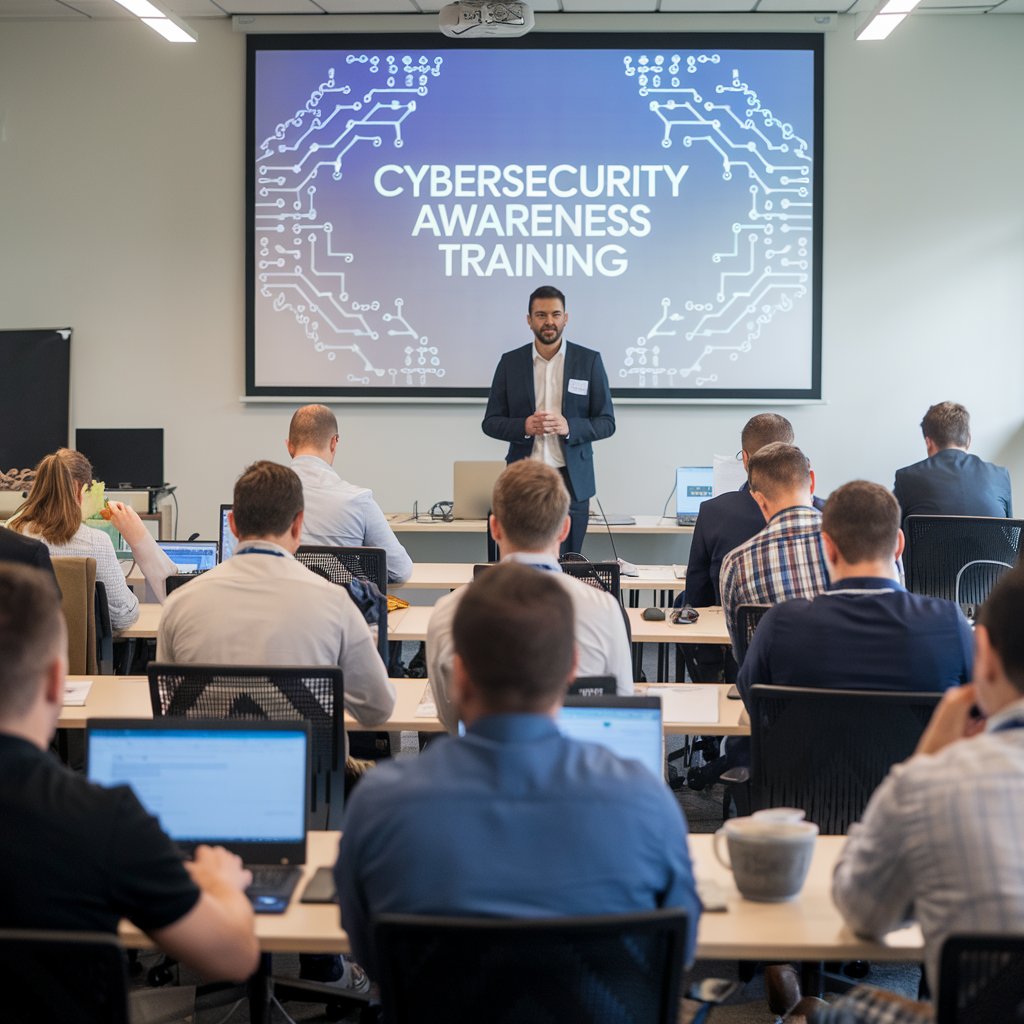UA
10 Min Read
Why Cybersecurity Awareness Training is Essential
Reduce Human Error
Phishing attacks, weak passwords, and accidental data exposure are common vulnerabilities. Educating employees minimizes these risks.Strengthen Organizational Defenses
With trained employees, your organization benefits from an additional layer of security against evolving threats.Ensure Regulatory Compliance
Compliance standards like GDPR, HIPAA, and PCI DSS often require regular employee training on cybersecurity best practices.Protect Company Reputation
A single security breach can damage customer trust. Awareness training helps prevent incidents that could tarnish your brand.
Key Components of a Cybersecurity Awareness Program
1. Start with an Assessment
Identify employees’ current understanding of cybersecurity.
Highlight areas of risk within your organization to tailor training.
2. Make Training Interactive and Engaging
Use gamification, quizzes, and real-world scenarios to keep employees involved.
Provide hands-on exercises, such as mock phishing simulations.
3. Focus on Practical Skills
Teach employees how to:
Identify phishing emails and scams.
Use strong, unique passwords and multi-factor authentication.
Securely handle sensitive information.
Recognize and report suspicious activity.
4. Cover Current Threats and Trends
Update training materials regularly to address:
Emerging phishing tactics.
Social engineering schemes.
Ransomware and malware threats.
5. Provide Role-Specific Training
Tailor content to employees’ roles (e.g., IT staff, HR, or executives).
Include sector-specific threats for industries like finance or healthcare.
Key Topics to Include in Training
1. Password Security
Importance of strong, unique passwords.
Encouragement to use password managers.
Risks of reusing credentials across accounts.
2. Phishing and Social Engineering
Spotting red flags in emails and messages.
Avoiding unsolicited links and attachments.
Verifying the authenticity of requests for information.
3. Safe Internet and Device Use
Using secure Wi-Fi connections and avoiding public networks.
Keeping software and operating systems updated.
Recognizing malicious websites and downloads.
4. Data Protection and Privacy
Proper handling of sensitive and personal information.
Securely sharing data through encrypted channels.
Awareness of data privacy regulations.
5. Incident Reporting
Steps to take when a potential threat is identified.
Encouraging prompt reporting without fear of blame.
Best Practices for Effective Training
1. Make it Ongoing
Conduct regular refresher courses to keep cybersecurity top of mind.
Incorporate periodic threat updates into training sessions.
2. Use Real-World Examples
Share case studies of past security breaches.
Simulate realistic attack scenarios to test knowledge.
3. Encourage a Culture of Security
Promote open communication about cybersecurity concerns.
Reward employees for demonstrating good cybersecurity practices.
4. Measure Success
Use assessments and simulated attacks to evaluate training effectiveness.
Track metrics such as reduced phishing click rates over time.
5. Involve Leadership
Encourage executives to participate in training sessions.
Lead by example, showing that cybersecurity is a company-wide priority.
Common Challenges and How to Overcome Them
Resistance to Training: Make sessions convenient, engaging, and relatable.
Knowledge Retention: Provide ongoing education through newsletters or micro-learning modules.
Budget Constraints: Use free or low-cost resources like webinars, online courses, and open-source tools.

Conclusion
Cybersecurity awareness training transforms employees into an active line of defense against cyber threats. By fostering a culture of security, your organization can minimize risks, comply with regulations, and build resilience in the face of ever-evolving cyber challenges. Implementing a well-structured, engaging, and continuous training program is an investment in your company’s future security and success. audit3aa
Join our newsletter list
Sign up to get the most recent blog articles in your email every week.
You can copy our materials only after making sure that your services are safe.
This site is protected by reCAPTCHA and the Google Privacy Policy and Terms of Service apply.










